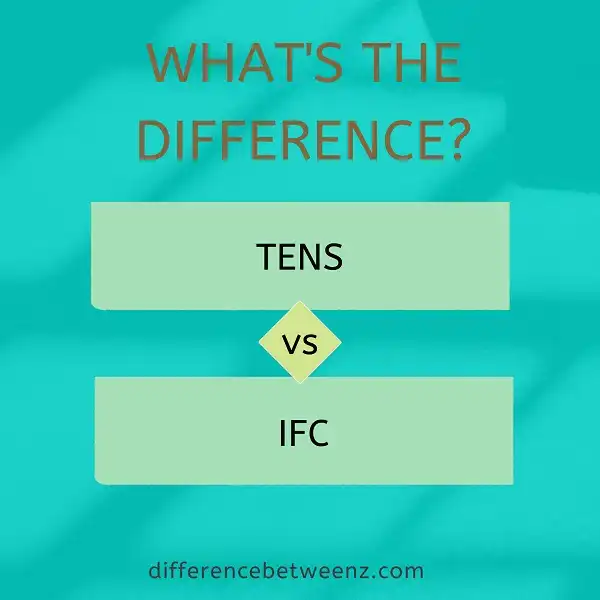There are many types of electrical stimulation used for physical therapy, including TENS and IFC. Both have their benefits, but it’s important to understand the difference between them before choosing one. TENS uses short, high-frequency pulses to stimulate the nerves, while IFC uses low-frequency currents that pass through the muscles. Each has its own advantages and disadvantages, so speak to your therapist to find out which is best for you.
What is TENS?
TENS is a short form for “transcutaneous electrical nerve stimulation.” TENS is a machine that uses electrical current to relieve pain. TENS sends electrical impulses through the skin to underlying nerves. These electrical impulses help to block pain signals from being sent to the brain. TENS is commonly used to relieve pain associated with labor, arthritis, and chronic (long-term) pain. TENS is usually used as a compliment to other forms of pain relief, such as medication and physical therapy. TENS is a safe and effective way to manage pain, with few side effects. TENS is typically used for short-term pain relief, but it can be used for long-term pain management as well.
What is IFC?
IFC therapy is a type of electrical stimulation therapy that is used to treat pain. IFC stands for interferential current. This therapy uses two medium-frequency electrical currents that are passed through the skin. These currents interfere with each other, and this interference produces a low-frequency current. This low-frequency current is thought to stimulate the body’s natural pain relievers, such as endorphins. IFC therapy is sometimes used to treat conditions such as arthritis, back pain, and neck pain. It is usually done in a series of treatments, and each treatment lasts for 20-30 minutes. IFC therapy is generally safe and well tolerated, but it may cause some side effects, such as skin redness or tingling.
Difference between TENS and IFC
TENS and IFC are two types of electrical stimulation that are commonly used for pain relief. TENS, or transcutaneous electrical nerve stimulation, uses low-voltage pulses to stimulate the nerves in the area of pain. IFC, or interferential current therapy, also uses electrical stimulation, but the currents are different. With IFC, there are four poles that deliver current through the skin in a figure-eight pattern. This type of electrical stimulation is thought to be more effective at blocking pain signals than TENS. TENS is typically used for short-term pain relief, while IFC is often used for chronic pain.
Conclusion
Although both TENS and IFC are effective methods of pain relief, they work in different ways. IFC is thought to be more effective for chronic pain, while TENS is better for acute pain. If you’re experiencing chronic pain, you may want to try IFC therapy; if your pain is sudden or short-term, opt for TENS instead.


